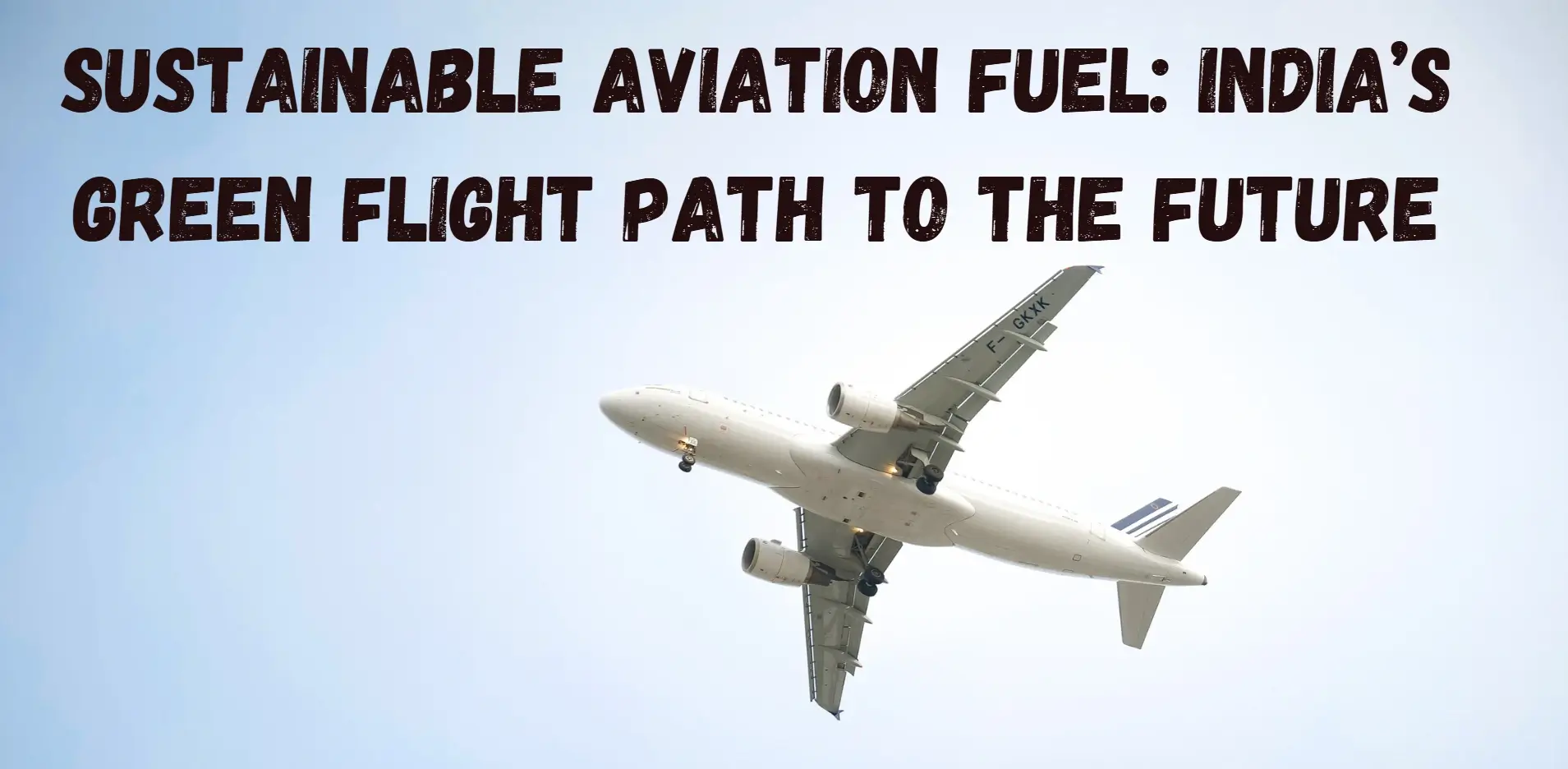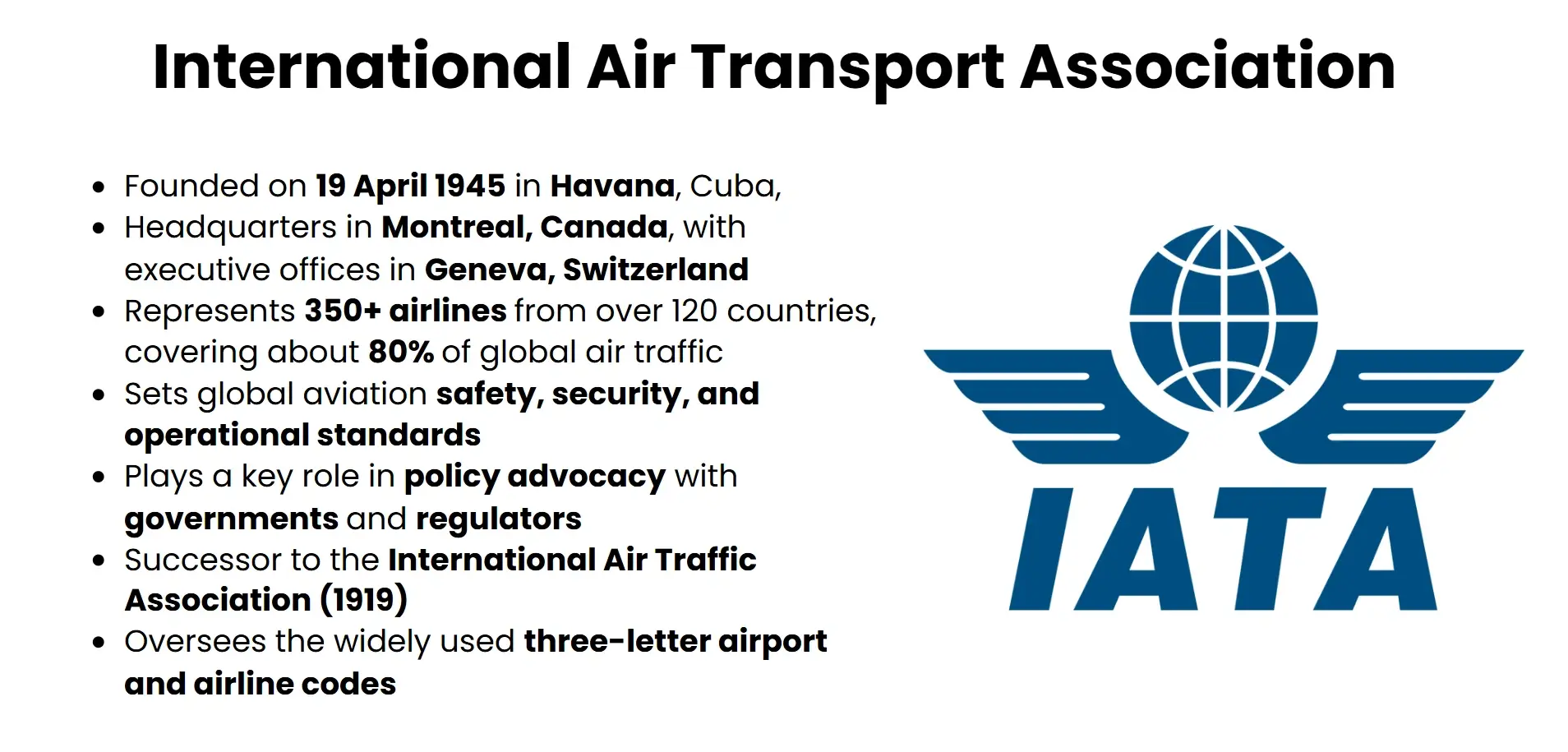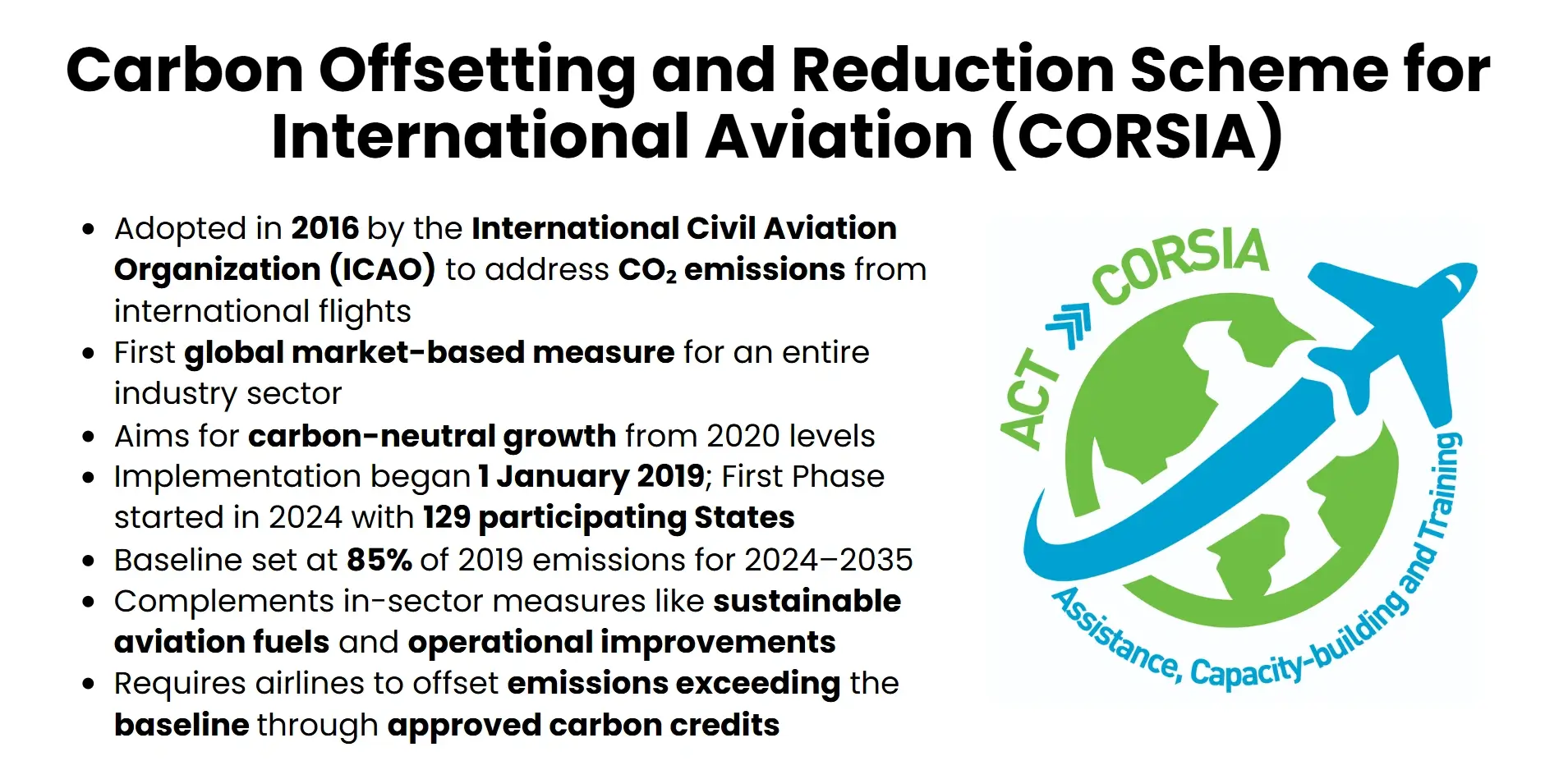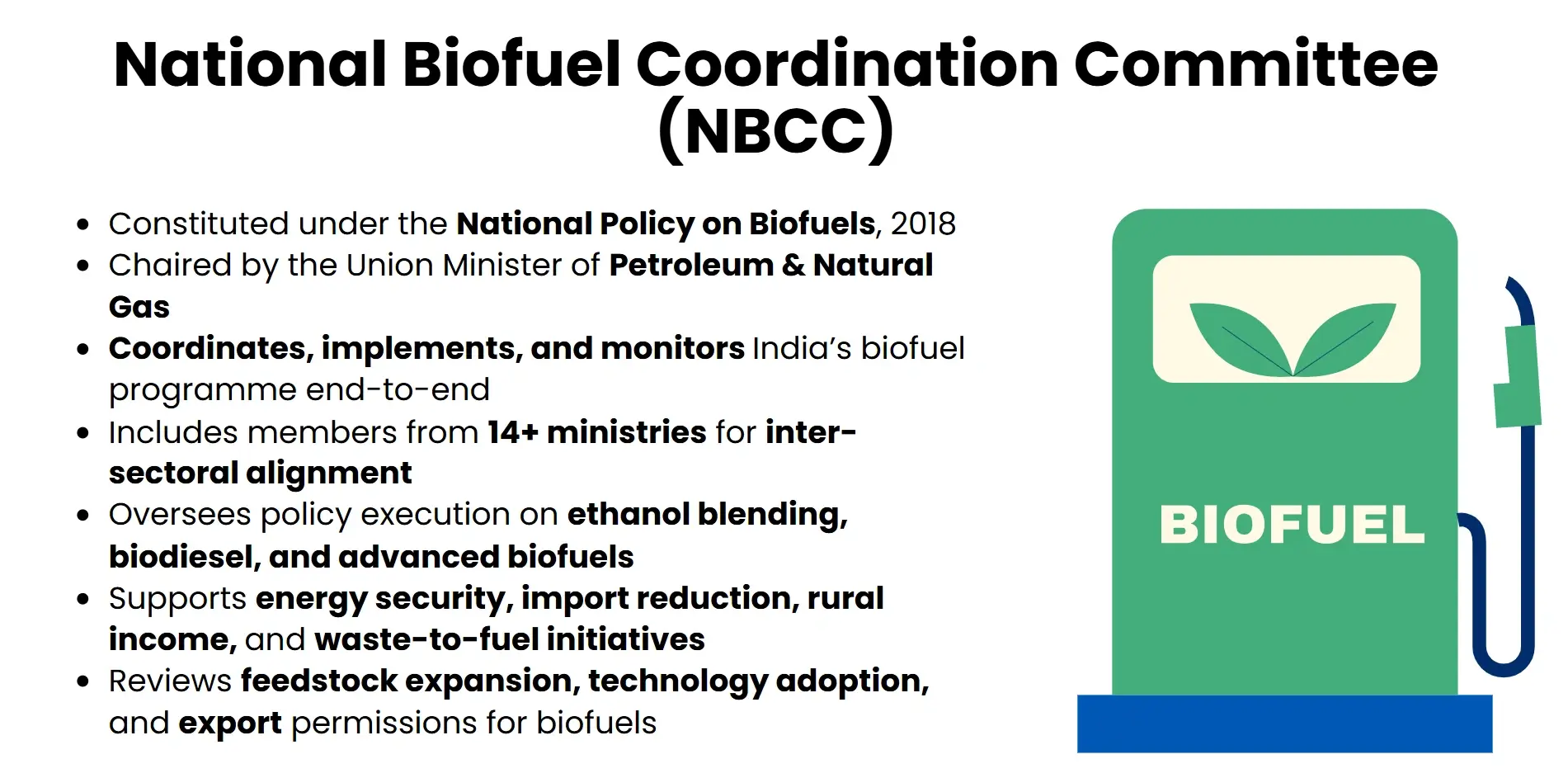Sustainable aviation fuel (SAF) is an alternative fuel made from non-petroleum feedstocks that reduces emissions from air transportation. The introduction of the Sustainable Aviation Fuel (SAF) facility is a key milestone to rid the industry of emissions by using bio-based feedstock to reduce emissions and achieve shared climate and energy targets for the country.

With the investment planned to be commissioned in full by the end of 2025, the facility is to be located in the Panipat refinery and would largely decrease the national dependence on petro-jet propulsion. Sustainable biofuels do not use food crops, prime agricultural land or fresh water. Sustainable aviation fuel (SAF) is certified by a third-party. Within a larger international context to curb the impact of aviation on the production of greenhouse gases, SAF presents a science-based, scalable mitigation tool, and SAF has the potential to offer up to 80 percent lifecycle reduction of GHG emissions. But what exactly is sustainable aviation fuel? SAF components are produced with renewable feedstocks, i.e., they are cooked oil, agricultural and urban waste products, among others, and this means that they can be added to existing aircraft engines and the infrastructure being used with no adaptation to these waste-to-fuel products. In addition to its environmental impacts, SAF decarbonization is a strategic tool that is paramount to energy security, economic diversification, as well as its long-term competitiveness. In this article, therefore, the scientific basis of SAF is discussed, the importance of India joining the production, and the wider implications to climate policy, innovation of the industry, and the aviation standards globally. Considering that the country has become a regional example in terms of sustainable aviation, the result of this effort could become a pattern of aviation decarbonization in the Global South.
What is a Sustainable Aviation Fuel?
Sustainable Aviation Fuel (SAF) is a key part of the solution to aviation addressing climate change. It is a substitute for fossil jet fuel usage that does not require any significant changes in aircraft technology.SAF is a liquid fuel currently used in commercial aviation which reduces CO2 emissions by up to 80%. It can be produced from a number of sources.
Key Features and Distinctive Features
SAF is a bio-based jet fuel that is made out of renewable materialslike used oil, residues of farming, municipal solid waste and algae. It is chemically identical to standard aviation turbine fuel (ATF), and as a result it is a drop-in fuel that can be seamlessly blended with traditional jet fuel, and can be distributed via current aircraft engines and fuelling systems without further engineering modifications. Such compatibility brings about the possibility of reducing emissions instantly in the current aviation systems.SAF is a biofuel used to power aircraft that has similar properties to conventional jet fuel but with a smaller carbon footprint.
Feedstocks and Production Pathways
These fuels can be manufactured through various technological pathways. The most common is the HEFA (Hydro-processed Esters and Fatty Acids) that transforms fats, oils, and greases into jet fuel after the hydrogen-treatment process. Other pathways involve Fischer-Tropsch synthesis, a pathway in which the biomass feedstocks are gasified to syngas, which is converted to hydrocarbons, and Alcohol-to-Jet (ATJ), in which the formation of jet fuel is done by catalysing ethanol or isobutanol. Whichever process is considered, feedstock sustainability is non-negotiable; feedstocks should not place a burden on food production or impose unacceptable pressures on biodiversity.
Strategic and Environmental Significance
SAF also provides 80 percent lifecycle greenhouse gas emission reductions compared to conventional fossil jet fuel, depending on the feedstock and refinement pathway. It helps to pursue larger climate goals, including the International Air Transport Association (IATA) net-zero goal by 2050, and has ancillary Indian benefits, including energy security through reduced reliance on foreign crude oil imports and revenue-generating waste management and biofuel research and development.

Certification- Global Standard
SAF must adhere to global sustainability standards in order to maintain environmental integrity. Panipat refinery in India has obtained ISCC CORSIA certification, linking its product with the Carbon Offsetting and Reduction Scheme for International Aviation which is a requirement of international SAF trade.
India’s First SAF Plant?
With the creation of the first SAF production facility in Panipat refinery in Haryana by the end of 2025, it will set a critical threshold in achieving cleaner flight and greater energy security in a country where fuel security and independence have been sought after.
Locational and Operational Context
The Panipat plant is located in a strategic location in the Indian Oil Corporation refinery complex and will have a capacity of up to 35000 tonnes SAF per annum, which will be solely produced from used cooking oil (UCO). It is expected that this production would serve to satisfy the 1 percent requirement of SAF blending with the flights within India towards international operations in 2027, as projected by the Ministry of Civil Aviation.
Distribution and Processing
Chains have been built in to supply the feedstock required to produce it, including the chains of the large hotel chains, restaurants, and industrial food producers like Haldiram. To reduce logistic complexities, collection and distribution are available through aggregators. The raw substance is then filtered, refined, and processed chemically to attain jet-grade properties. Even though the collection of waste material is scalable in institutional sources, there is still a key research challenge to leverage more of the waste generated by households.
StrategicImplications
The Panipat SAF Plant supports India's climate policy agenda, together with the added benefit of energy security enhanced by the lighter dependence on imported crude oil. With more states in Europe implementing SAF requirements, SAF manufactured in India will begin to enter the export market and bridge India as a global node of sustainable aviation fuel.
Why SAF Matters?
Sustainable Aviation Fuel (SAF) is not only a technological evolution, but a strategic requirement of climate action, energy security, and the future of global mobility. It is pertinent to the environmental, economic, and geopolitical spheres.
Climate Effect and Emission Mitigation
A reduction of greenhouse gas emissions is demonstrated in the whole life cycle, up to 80 percent lower compared to conventional jet fuel in cases where the manufacture of SAF uses renewable feedstocks like used cooking oil or agricultural by-products. In contrast to fossil fuels, SAF exists in a closed carbon cycle: the CO2 emitted in the burning is compensated by the amount of CO2 captured in the growth of feedstock. SAF thus plays a critical role in the net-zero targets of aviation in 2050 as expressed by the International Air Transport Association (IATA).
Non-CO2 benefits and Air Quality
In addition to its carbon-reducing qualities, SAF is also a mitigant to particulate matter and sulfur oxides, reducing air quality impact in both airport and flight corridors. There is also less soot and contrail generated in cleaner combustion, which has been demonstrated to augment atmospheric heating. SAFs'lowernitrogen oxide (NO2) emissions also offset the formation of climate-changing cirrus clouds, and these indirect environmental benefits are growing, as well.
Strategic and Economic Interest
In India, SAF is a path towards energy independence that adds to reducing imports of crude oil and builds on domestic capacities in waste management and biofuels production. As Europe and the United States implement mandates to use a mix of SAFs, Indian output, especially of certified plants such as Panipat, can make the country a possible exporter in the incipient global green-fuel economy. In addition, SAF uptake aligns with the climate ambition of India as part of the Paris Agreement and India's Achieving Net-Zero by 2070.
Policy congruence
SAF also strengthens adherence to international standards like CORSIA (Carbon Offsetting and Reduction Scheme for International Aviation) that allows airlines to achieve sustainability standards, without compromising on efficiency. Such a vigorous approach to SAFs can thus put India in a strong position to be a leader on sustainability in the region.

Policy Landscape and Global Benchmarks
Sustainable Aviation Fuel (SAF) is coming of age in the international context, not just as a technological breakthrough but indeed as a public policy tool. The Indian SAF programme is being modelled together with a set of country-specific requirements, blending with global sustainable goals.
Emerging SAF Policy Framework in India
India is being guided towards biofuels by the Ministry of Civil Aviation and the National Bioenergy Programme. In 2023, a phased blending requirement was announced: SAF will be blended into international flights at rates of 1% in 2027 and 2% in 2028. These plans align with India's commitments to the Paris Agreement and its goal of achieving net-zero emissions by 2070. The National Biofuel Coordination Committee (NBCC) provides the technical standards framework and feedstock aggregation.

The SAF sector is being influenced by international policy dynamics. The European Union program called “ReFuelEU Aviation” mandates that SAFs be blended with conventional fuel in the aviation sector to 2 % by 2025 and 70 % target by 2050. The United States’ Inflation Reduction Act provides tax credits in support of producing SAF, as well as incentives to use it. The countries, including India, are under pressure to adopt SAF faster in response to the pressure brought on by such benchmarks aimed at meeting global sustainability demands.
CORSIA and International Compliance
The Carbon Offsetting and Reduction Scheme for International Aviation (CORSIA) covers India, so its SAF policy is tightly integrated with the latter. CORSIA also requires airlines to neutralize emissions of international flights and supports approved SAF use. INDIAN Panipat refinery has got ISCC CORSIA certification, hence its SAF can be traded and used in the international aviation industry.
Strategic Positioning and Policy Synergy
By setting its SAF strategy in line with the global standards, India places itself in a position to be able to export its products in the future and dominate the green aviation regionally. The expansion of SAF will be critical by harmonising standards, incentives that are itemised, and strong-armed partnerships.
Barriers and the Road Ahead
Sustainable Aviation Fuel (SAF) holds the potential to become a potentially disruptive innovation in delivering decarbonisation of aviation, but its role as a niche product is likely to be constrained by a complex set of technological, financial, and regulatoryconstraints, which must be addressed across sectors through an industry-wide approach.
Uncertainty caused by technology and capital-intensive infrastructure
A number of promising SAF production pathways, notably Alcohol-to-Jet and Power-to-Liquid routes, have multi-billion-dollar investment outlays. Since these routes are already at a pre-commercial level, performance risks and lack of tangible commercial benchmarks are other challenges that investors will have to grapple with. As a result, the performance guarantees are frequently retained by engineering, procurement, and construction companies, thus undermining the timely execution of projects and financing arrangements.
Feedstock and supply-chain restrictions
Feedstocks with acute supply constraints are currently overwhelming the existing production of SAF, especially used cooking oil (UCO), animal fats, and crop residues. Scaling up will require feedstocks more abundant and not based upon food sources such as algae, municipal solid waste, or even dedicated energy crops. Moreover, logistics around transporting and storing SAF in far-flung geographical areas mandate the utilization of newly added ancillary infrastructure, something that will present added cost and operational depth.
Fragmented policy and cross-purposes market signals
Though an expanding number of jurisdictions are extending the SAF mandate, uncertain regulatory mechanisms across areas create ambiguity and reduce investorconfidence. Short-term policy ambiguity, in the absence of harmonised standards, constrains the capacity of producers to predict future offtake trends and long-term base commodity contracts. Simultaneously, high price flotation and the absence of carbon pricing therefore make SAF even less competitive compared with regular jet fuel.
Possible solutions
The stakeholder alignment across the value chain,like airlines, producers, EPCs, and policy-makers, will be needed to achieve the SAF market penetration. The de-risk routes. Delay can be reduced through publicprivate partnerships, performance-based incentives, and subsidies based on particular objectives. Revolutionary feedstock conversion, e.g.,high-yield algal farming, and modular refinery designs to reduce capital intensity are also crucial. The idea of deploying SAF blends faster is very encouraging, given that more than 50 airlines have already declared their intentions to make the switch in this regard by 2030.
Conclusion
Sustainable Aviation Fuel (SAF) is much more than a technological solution; it turns out to be a strategic instrument of climate resilience, rural development, and industrial transition. Despite still daunting economic and infrastructural challenges, the combination of large agricultural potential and progressive policy development alongside burgeoning aviation needs in India brings with it an advantageous scenario of SAF switch amid the Global South. The requisite concerted action in a variety of sectors is required to realize this potential, namely, innovation of feedstocks, an increase in the capacity of the refining industry, and the convergence of international standards. Success in the establishment of more programmes as pilots move to a national strategy will depend on open planning, open governance, and flexible regulation. Maintaining a balance of vision and practicality, SAF can help India decarbonize its skies and, at the same time, strengthen its ground weaknesses.